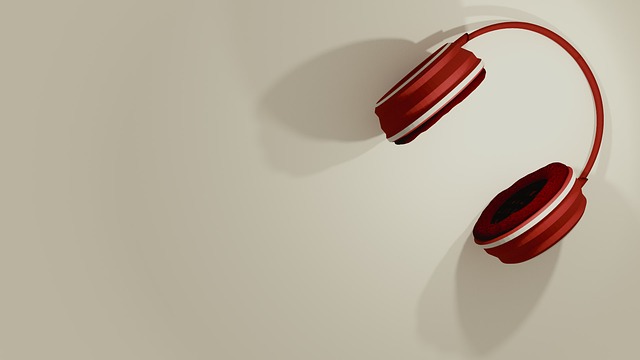How To Make Wired Headphones Wireless?
Are you looking for a way to make your wired headphones wireless? If so, you’ve come to the right place!
Bluetooth is a wireless technology used in various devices nowadays. It allows two or more devices to connect and exchange data.

This can be useful when you want to transfer music from your phone to your car stereo, for instance. However, Bluetooth receivers are also useful for other things – like making headphones wireless!
In this article, we’ll look at how to make wired headphones wireless
And what are Bluetooth transmitters and we’ll also show you how they work and provide some helpful tips.
So don’t wait any longer – start making your wireless headphones today! Here if you want to know how to pair jlab wireless headphones take a look.
What are Bluetooth transmitters?
Bluetooth transmitters are small devices that allow you to connect your wired headphones or speakers to a Bluetooth-enabled device.
They vary in price and features, but the most common ones are compact, battery-powered boxes that sit on the headphone jack of your device.
When you plug in a Bluetooth transmitter, it will identify your headphones and automatically set them up. You can also manually pair your headphones with a Bluetooth receiver by entering their associated Bluetooth address into the receiver’s menu.
Once paired, you can use any compatible audio app to play music through your headphones without having to unplug them or touch your phone.
Some Bluetooth receivers even have built-in microphones so you can take phone calls while listening to music.
They can be used in a variety of ways, including as an impromptu speakerphone when your phone is nearby, as a way to wirelessly stream audio from compatible devices, and as a way to control music playback from your smartphone without having to take the phone out of your pocket.
Bluetooth receivers are available in both wired and wireless versions and can be purchased online or at retail stores. They are generally inexpensive and easy to use, making them a versatile addition to any home or office environment.
How do Bluetooth transmitters work?
For a better understanding of how to make wired headphones wireless.
First, we need to take a look at how Bluetooth transmitters work.
Bluetooth is a wireless technology that allows two devices to communicate with each other without having to be connected by a cable. Bluetooth transmitters work by using radio waves to send information from one device to another.

Bluetooth transmits data wirelessly over short distances by simulating radio waves. The devices that are compatible with Bluetooth technology use a special frequency to send and receive messages.
When two devices are within range of each other, they can start exchanging information by broadcasting the signal at the same time.
How to pair your wired headphones using a Bluetooth transmitter
There are a few ways to pair your wired headphones using a Bluetooth transmitter. The easiest way is to turn on the Bluetooth on your phone and pair the transmitter with the receiver.
Plug it into an outlet and connect it to your headphones by pressing the button on the transmitter and plugging in the headphone jack on your headphones.
- If you have an Apple device, you can find the Bluetooth settings in the “Settings” app. For Android devices, look for “Bluetooth” in the main menu.
- If you’re using a Windows computer, you can search for “Bluetooth” in the Start menu or Control Panel and click on it.
- Then, search for “headphones” or “wireless headphones” and select the transmitter that you want to use.
- Once you’ve found the transmitter and receiver, click on them and select “pair.” You’ll then be asked to enter your phone’s passcode.
Once you’ve paired them, your headphones will be wireless!
Frequently Asked Questions
Can you make wired headsets wireless?
Well, yes! Wireless headphones are actually quite easy to make wireless. All you need is some Bluetooth technology and some wirelessly connected speakers.
You can then simply remove the wire from the headset and plug it into the speaker. This way, you’ll be able to use your wired headset without any cables connecting it to your phone or computer.
How do you make a 3.5 mm jack wireless?
Wireless audio is becoming more and more popular, but many people don’t know how to make a 3.5 mm jack wireless. There are a few different ways to do this, and each has its own set of pros and cons. Here’s a look at this method:
1) Use an RF dongle: This is the simplest method, and it works with any audio device that has a 3.5 mm output. All you need is an RF dongle, which is a small device that can transceiver signals between devices.
The downside to this method is that it requires separate hardware for each device you want to wirelessly transmit audio.
For example, if you want to send audio from your computer to your stereo, you’ll need both a dongle and a compatible stereo receiver.
How do I make my USB-wired headset wireless?
If you’re looking to make your USB-wired headset wireless, there are a few different methods you can try.
The simplest way is to purchase a wireless adapter for your headset, but this can be expensive and may not be compatible with all headsets.
Another option is to use a Wi-Fi hotspot or tether your phone to your computer to create a wireless connection.
If neither of these solutions works for you, you can try connecting your headset wirelessly using Bluetooth. There are many different ways to go about making your USB-wired headset wireless, so find one that works best for you and get started!
Here you could also use headphones db.
Conclusion
Wired headphones can be a pain to carry around because of the wire connecting them to your device. Hopefully, this article would have helped you understand how to make wired headphones wireless.
Once you know how to make wired headphones wireless, be sure to share this information with your friends so they can enjoy the same great experience without having to carry around extra cords!



